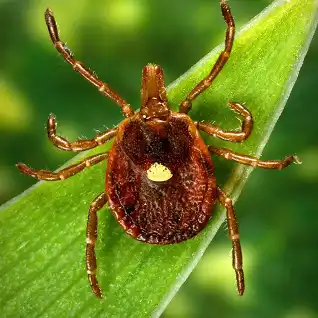Ticks are small but significant creatures that can pose health risks to humans and animals alike. With their prevalence in various parts of Canada, understanding the different types of ticks and how to identify them is crucial for safeguarding against potential diseases they may carry. In this guide, we'll explore some of the most common ticks found in Canada and provide essential tips for identification.
Blacklegged Tick (Ixodes scapularis):
- Also known as the deer tick, the blacklegged tick is prevalent in many parts of Canada, particularly in wooded and grassy areas.
- Identification: Blacklegged ticks are typically small, with adults ranging from 2 to 3 mm in size. They have reddish-brown bodies with black legs, and their bodies may appear darker when engorged with blood.
- Habitat: These ticks thrive in areas with high humidity, such as forests, shrublands, and tall grasses.
- Diseases: Blacklegged ticks are known to transmit Lyme disease, making them a significant health concern in regions where the disease is endemic.
American Dog Tick (Dermacentor variabilis):
- The American dog tick is commonly found in various regions across Canada, particularly in grassy and wooded areas.
- Identification: Adult American dog ticks are larger than blacklegged ticks, measuring around 3 to 5 mm in length. They have reddish-brown bodies with distinctive white markings on their backs.
- Habitat: These ticks often inhabit areas with abundant vegetation, including meadows, fields, and wooded areas.
- Diseases: American dog ticks can transmit diseases such as Rocky Mountain spotted fever and tularemia.
Wood Tick (Dermacentor andersoni):
- Also known as the Rocky Mountain wood tick, this species is prevalent in western Canada, particularly in wooded and grassy areas.
- Identification: Wood ticks are similar in appearance to American dog ticks, with adults ranging from 3 to 6 mm in size. They have reddish-brown bodies and distinctive white markings on their backs.
- Habitat: Wood ticks prefer habitats with moderate to high humidity, such as forests, grasslands, and scrublands.
- Diseases: Wood ticks can transmit diseases such as Rocky Mountain spotted fever and Colorado tick fever.
Lone Star Tick (Amblyomma americanum):

- While less common in Canada compared to other species, the Lone Star tick has been reported in certain regions, particularly in southern parts of the country.
- Identification: Adult Lone Star ticks are medium-sized, with females measuring around 3 to 5 mm and males slightly smaller. They have reddish-brown bodies and a distinctive white spot or "lone star" on their backs.
- Habitat: Lone Star ticks prefer wooded and grassy habitats, as well as areas with dense vegetation.
- Diseases: While less prevalent in Canada, Lone Star ticks can transmit diseases such as ehrlichiosis and tularemia.


